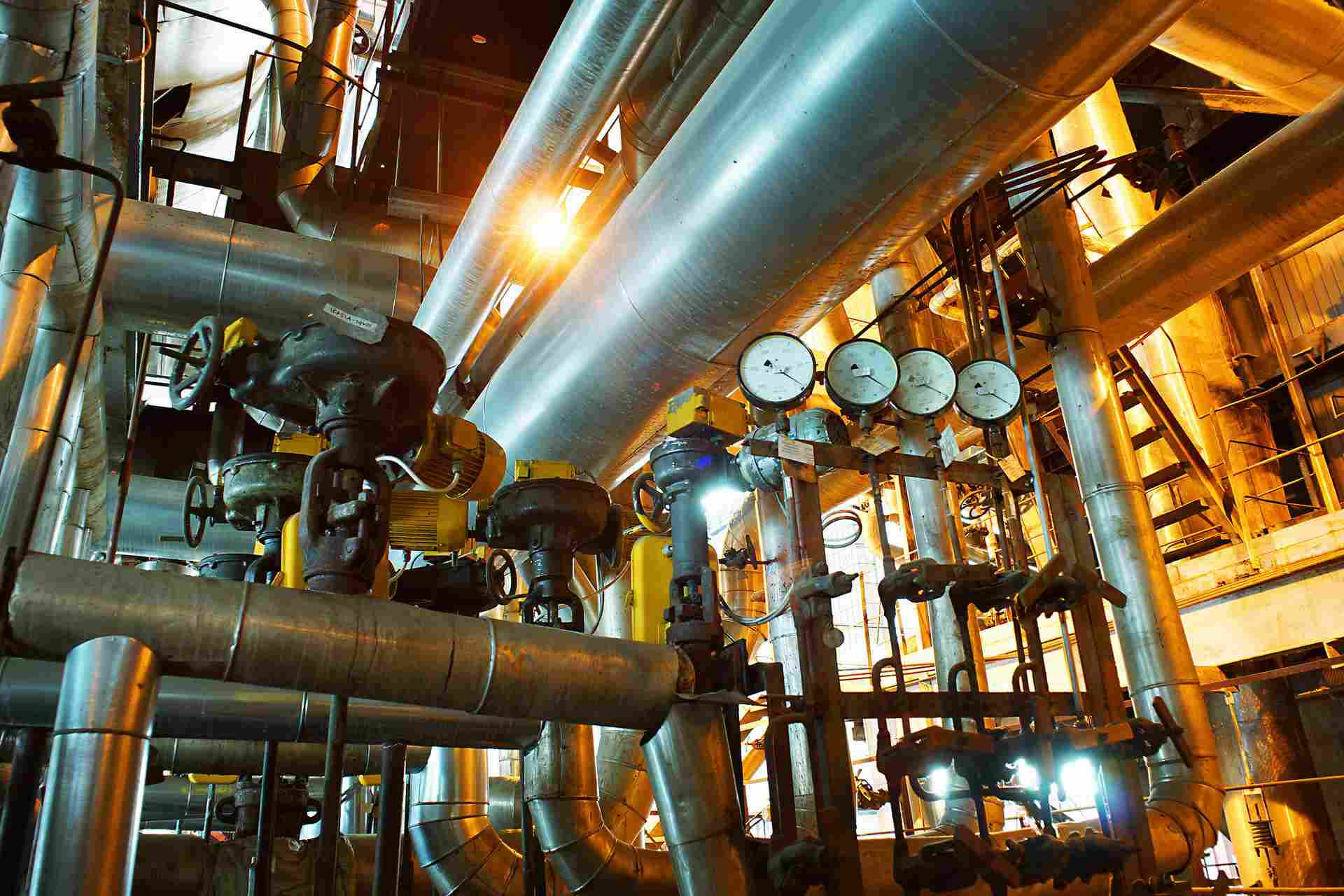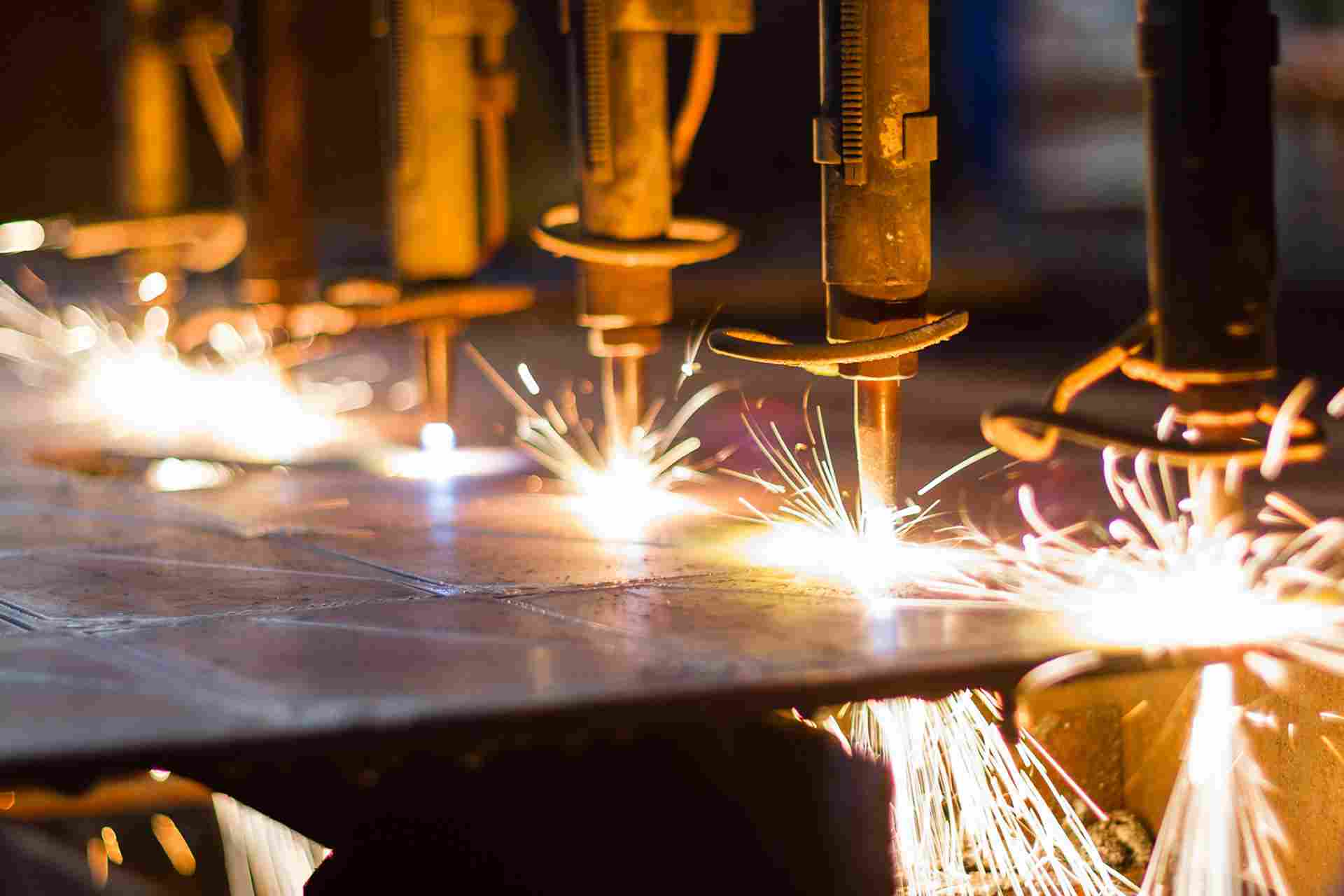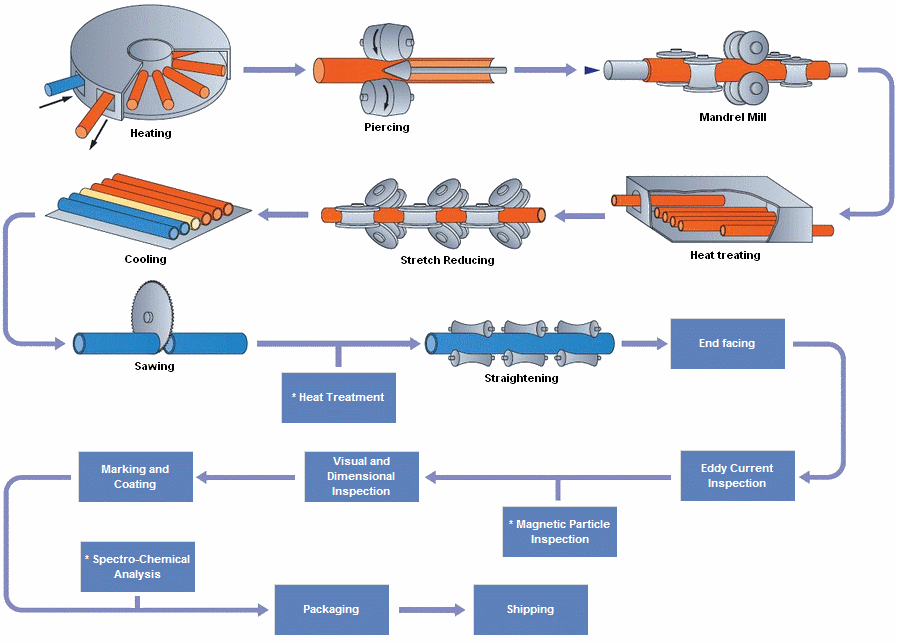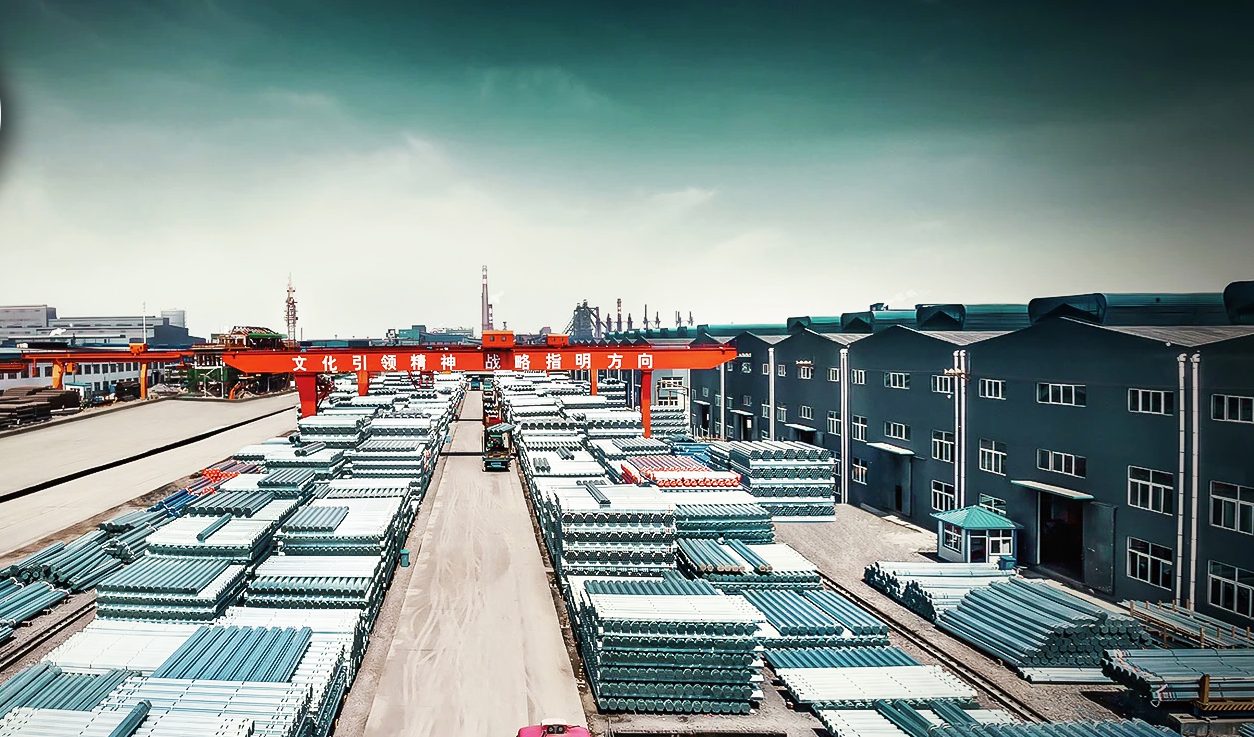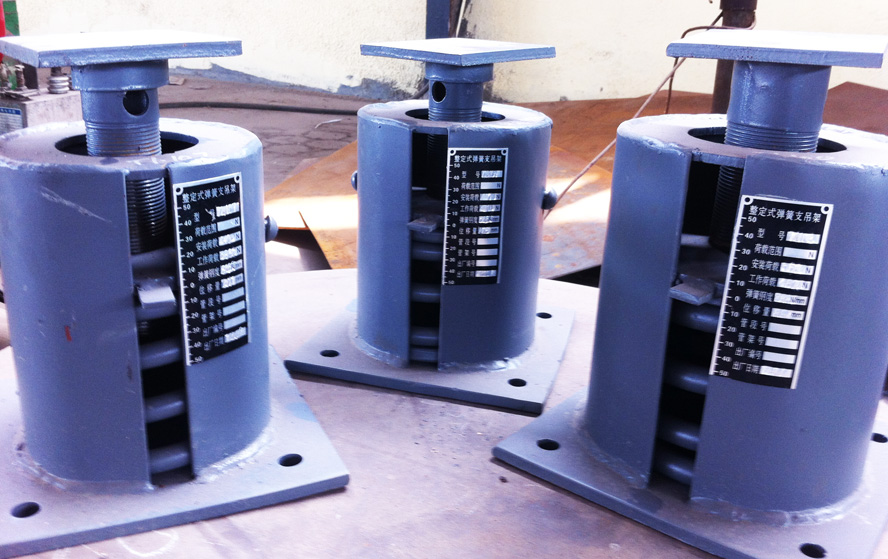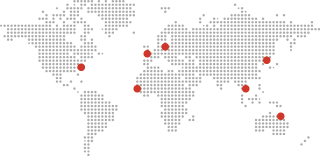UNS N08825 การวิจัยกระบวนการเชื่อมโลหะผสมนิกเกิลที่ใช้

Research on Welding Process of UNS N08825 Nickel-Based Alloy Pipelines
1. Introduction to UNS N08825 Nickel-Based Alloy
1.1 Chemical Composition and Material Properties
สหรัฐอเมริกา N08825 (ความไม่สงบ 825) เป็นโลหะผสมนิกเกิล-เหล็ก-โครเมียมที่มีการเติมโมลิบดีนัม, ทองแดง, และไทเทเนียม. Its chemical composition is meticulously designed to achieve exceptional corrosion resistance and mechanical stability in harsh environments (#user-content-ref-1)(#user-content-ref-3):
- นิกเกิล (38–46%): Enhances resistance to chloride-induced stress corrosion cracking and acidic media (เช่น, sulfuric and phosphoric acids).
- โครเมียม (19.5–23.5%): Forms a protective oxide layer against oxidation and pitting corrosion.
- โมลิบดีนัม (2.5–3.5%) and Copper (1.5–3%): Improve resistance to reducing acids, particularly sulfuric acid.
- ไทเทเนียม (0.6–1.2%): Stabilizes the alloy against intergranular corrosion during welding.
Mechanical properties under ASTM/ASME standards include:
- ความต้านทานแรงดึง: 550–585 MPa
- ความแข็งแรงของผลผลิต: 240–275 MPa
- การยืดตัว: ≥30% (#ผู้ใช้เนื้อหา-Ref-2)(#ผู้ใช้เนื้อหา-ref-6).
1.2 การใช้งานในภาคอุตสาหกรรม
โลหะผสมนี้ใช้กันอย่างแพร่หลายใน:
- น้ำมัน & แก๊ส: ท่อส่งใต้ทะเล, ระบบจัดการก๊าซกรด.
- การแปรรูปทางเคมี: เครื่องปฏิกรณ์, เครื่องแลกเปลี่ยนความร้อน.
- พลังงานนิวเคลียร์: ระบบหล่อเย็น, ที่เก็บเชื้อเพลิงที่ใช้ไป (#ผู้ใช้เนื้อหา-Ref-5)(#ผู้ใช้เนื้อหา-ref-46).
2. วิธีการเชื่อมสำหรับ UNS N08825 ท่อ
2.1 เทคนิคการเชื่อมทั่วไป
2.1.1 ทีไอจี (GTAW) การเชื่อม
- ข้อดี: การควบคุมความร้อนที่แม่นยำ, รอยเชื่อมคุณภาพสูง, กระพือปีกน้อยที่สุด.
- พารามิเตอร์:
- ปัจจุบัน: 90–150 a (ขั้ว Dcen).
- แรงดันไฟฟ้า: 10–15 V.
- ป้องกันก๊าซ: argon หรือ ar-he mixtures (อัตราการไหล: 10–15 ลิตร/นาที) (#ผู้ใช้เนื้อหา-ref-7)(#ผู้ใช้เนื้อหา-รีฟ -22).
- การใช้งาน: รูทผ่านในท่อวิกฤตที่ต้องมีข้อต่อที่ปราศจากข้อบกพร่อง.
2.1.2 ฉัน (การยิง) การเชื่อม
- ข้อดี: อัตราการสะสมสูง, เหมาะสำหรับท่อที่มีผนังหนา.
- พารามิเตอร์:
- ปัจจุบัน: 120–200 a.
- ความเร็วฟีดลวด: 4–8 m/me.
- ป้องกันก๊าซ: 98% อาร์ + 2% CO₂ (#ผู้ใช้เนื้อหา-Ref-12)(#ผู้ใช้เนื้อหา -24).
2.1.3 สมาว (การเชื่อมอาร์คโลหะป้องกัน)
- ข้อดี: ความยืดหยุ่นในการเชื่อมภาคสนาม.
- ขั้วไฟฟ้า: AWS ENICRMO-3 สำหรับความต้านทานการกัดกร่อนที่ตรงกัน.
- ความท้าทาย: ต้องใช้ผู้ให้บริการที่มีทักษะในการจัดการความเสี่ยงรวมตะกรัน (#ผู้ใช้เนื้อหา-ref-8)(#ผู้ใช้เนื้อหา-รีฟ -11).
2.2 การเลือกวัสดุเชื่อม
- ฟิลเลอร์โลหะ: ernichrmo-3 (tig/me) หรือ enicrmo-3 (สมาว) to match base metal composition.
- การทำความสะอาดก่อนการเชื่อม: Acetone or alcohol degreasing to remove sulfur, zinc, และสารปนเปื้อนอื่นๆ (#user-content-ref-19)(#user-content-ref-35).
3. Optimization of Welding Parameters
3.1 Critical Parameters and Their Effects
| พารามิเตอร์ | Optimal Range | Impact on Weld Quality |
|---|---|---|
| อินพุตความร้อน | 1.5–2.5 kJ/mm | Excessive input causes HAZ embrittlement (#user-content-ref-13). |
| อุณหภูมิ | ≤150° C | Prevents carbide precipitation (#user-content-ref-20). |
| Travel Speed | 50–90 mm/min | High speed reduces dilution but risks lack of fusion (#user-content-ref-21). |
3.2 กรณีศึกษา: TIG Welding Parameter Optimization
A study on API 5L X-65 cladded UNS N08825 demonstrated:
- Optimal Parameters: 110 ก, 12 วี, 70 mm/min.
- Results:
- Tensile strength retention: 99.2% of base metal.
- Impact toughness in HAZ: 88–258 J (#user-content-ref-16).
4. Welding Defect Prevention and Control
4.1 Common Defects and Mitigation Strategies
| Defect Type | Causes | Preventive Measures |
|---|---|---|
| แคร็กร้อน | Low-melting eutectics, stress | Use low-sulfur filler metals; preheat (100–150°C) (#user-content-ref-31). |
| ความพรุน | Moisture, contaminated shielding | Ensure gas purity (>99.995%); avoid drafts (#user-content-ref-35). |
| Lack of Fusion | Insufficient heat input | Increase current; reduce travel speed (#user-content-ref-36). |
4.2 Quality Assurance Standards
- ASTM B705: Specifies dimensional tolerances and mechanical testing for welded pipes.
- ไอเอสโอ 5817: Defects classification (Level B for critical applications) (#user-content-ref-28)(#user-content-ref-30).
5. การรักษาความร้อนหลังการเชื่อม (สวท)
5.1 Requirements and Procedures
- Typical PWHT: 600–650°C for 1–2 hours to relieve residual stresses.
- Exceptions: Austenitic structure of UNS N08825 generally avoids PWHT unless specified for high-temperature service (>538องศาเซลเซียส) (#user-content-ref-38)(#user-content-ref-42).
5.2 Microstructural Considerations
- Carbide Precipitation: Minimized by rapid cooling (water quenching) post-PWHT.
- Stabilization Treatment: 885°C for 1.5 hours to enhance intergranular corrosion resistance (#user-content-ref-39).
6. Industry Applications and Case Studies
6.1 น้ำมัน & ภาคก๊าซ
- Subsea Pipeline Welding: TIG root + MIG fill/cap processes achieve X-ray compliance (100% pass rate) (#ผู้ใช้เนื้อหา-Ref-12).
- กรณีศึกษา: ก 2024 project by Sinopec utilized UNS N08825 for sour gas pipelines, reducing corrosion-related failures by 40% (#user-content-ref-43).
6.2 Nuclear Power Applications
- Coolant System Welds: emb (การเชื่อมลำแสงอิเล็กตรอน) achieved 600 MPa tensile strength, matching base metal performance (#user-content-ref-17).
6.3 การแปรรูปทางเคมี
- Acid Reactor Fabrication: SMAW with ENiCrMo-3 electrodes demonstrated 15-year service life in sulfuric acid environments (#ผู้ใช้เนื้อหา-ref-46).
7. แนวโน้มและนวัตกรรมในอนาคต
- การเชื่อมแบบไฮบริดเลเซอร์: Combines laser and MIG for higher speed and deeper penetration.
- การผลิตสารเติมแต่ง: Wire-arc AM (WAAM) for complex pipe geometries with UNS N08825 (#user-content-ref-17)(#ผู้ใช้เนื้อหา -24).
Chemical composition and mechanical properties of UNS N08825 nickel-based alloy
UNS N08825 nickel-based alloy (commonly known as Incoloy 825) is an austenitic iron-chromium-nickel alloy, the main components of which include nickel, โครเมียม, โมลิบดีนัม, copper and a small amount of iron, ไทเทเนียม, อลูมิเนียมและองค์ประกอบอื่น ๆ. องค์ประกอบทางเคมีและคุณสมบัติเชิงกลมีดังนี้:
องค์ประกอบทางเคมี
- นิกเกิล (ใน) : 38%-46%.
- โครเมียม (Cr) : 19.5%-23.5%.
- โมลิบดีนัม (โม) : 2.5%-3.5%.
- ทองแดง (ลูกบาศ์ก) : 1.5%-3.5%.
- เหล็ก (เฟ) : 22%-25%.
- ซิลิคอน (และ) : 0.5%.
- แมงกานีส (มน) : 1.0%.
- กำมะถัน (ส) : 0.03%.
- ฟอสฟอรัส (ป) : 0.03%.
คุณสมบัติทางกล
- ความแข็งแรงของผลผลิต : 725 MPa.
- ความต้านทานแรงดึง : 550 MPa.
- การยืดตัว : ≥30%.
- Brinell Hardness : ≤135-165.
- โมดูลัสของความยืดหยุ่น : 28.3 x 10⁶ kN/mm² (196 kn/mm²).
คุณสมบัติ
- ความต้านทานการกัดกร่อน : ความต้านทานการกัดกร่อนที่ยอดเยี่ยม, โดยเฉพาะอย่างยิ่งในการลดและออกซิไดซ์สภาพแวดล้อม, และทำงานได้ดีกับสื่อเช่นกรดซัลฟูริก, กรดฟอสฟอริก, คลอไรด์และไฮดรอกไซด์.
- ประสิทธิภาพอุณหภูมิสูง : มันยังคงรักษาคุณสมบัติเชิงกลที่ดีในสภาพแวดล้อมที่อุณหภูมิสูงสูงกว่า 700 ° C.
- ความต้านทานออกซิเดชัน : ในสภาพแวดล้อมการออกซิเดชั่นที่อุณหภูมิสูง, ชั้นพื้นผิวออกไซด์บางลง, ซึ่งทำให้การสึกหรอและความชราของวัสดุล่าช้า.
- ประสิทธิภาพการเชื่อม : ง่ายต่อการสร้างและเชื่อม, และไม่ไวต่อความรู้สึกได้ง่ายในระหว่างกระบวนการเชื่อม.
โดยสรุป, UNS N08825 โลหะผสมนิกเกิลใช้กันอย่างแพร่หลายในอุตสาหกรรมเคมี, วิศวกรรมทางทะเล, อุตสาหกรรมนิวเคลียร์และเครื่องแลกเปลี่ยนความร้อนที่อุณหภูมิสูงเนื่องจากความต้านทานการกัดกร่อนที่ยอดเยี่ยมและประสิทธิภาพอุณหภูมิสูง.
UNS N08825 Common welding process methods (TIG/MIG/SMAW, ฯลฯ)
สหรัฐอเมริกา N08825 (ความไม่สงบ 825) is a nickel-based alloy with excellent corrosion resistance and high temperature performance. It is widely used in petrochemical, วิศวกรรมทางทะเลและสาขาอื่น ๆ. Its common welding methods include TIG (tungsten inert gas welding), ฉัน (การเชื่อมก๊าซเฉื่อยโลหะ) and SMAW (manual arc welding).
- ทีไอจี (Tungsten Inert Gas Welding)
TIG welding is suitable for thin plates and situations where high-quality welded joints are required. This method uses a non-consumable tungsten electrode and inert gas (such as argon) to protect the welding area, which can accurately control the heat input and reduce the structural changes in the heat-affected zone of the weld, thereby improving the welding quality. - ฉัน (Metal Inert Gas Welding) :
MIG welding is suitable for welding medium and thick plates. มันสามารถบรรลุประสิทธิภาพการผลิตสูงและประสิทธิภาพการเชื่อมที่ดีโดยการบริโภคสายเชื่อมอย่างต่อเนื่องและปกป้องพื้นที่เชื่อมด้วยก๊าซเฉื่อย. วิธีนี้เหมาะสำหรับการเชื่อมแผ่นหนา, แต่ต้องมีการควบคุมอินพุตความร้อนเชื่อมอย่างเข้มงวดเพื่อหลีกเลี่ยงการเปลี่ยนแปลงโครงสร้าง. - สมาว (การเชื่อมส่วนโค้งโลหะด้วยตนเอง) :
SMAW เป็นวิธีการเชื่อมแบบดั้งเดิมที่เหมาะสำหรับวัสดุที่มีความหนาต่าง ๆ. วิธีนี้ละลายโลหะผ่านส่วนโค้งระหว่างอิเล็กโทรดและชิ้นงาน, และอิเล็กโทรดปกป้องพื้นที่เชื่อมระหว่างกระบวนการหลอมละลาย. แม้ว่าประสิทธิภาพการผลิตจะต่ำ, ใช้งานง่ายและเหมาะสำหรับการเชื่อมท่อเส้นผ่านศูนย์กลางขนาดเล็กและรอยเชื่อมฐาน.
นอกจากนี้, ควรสังเกตจุดต่อไปนี้ในระหว่างกระบวนการเชื่อมของโลหะผสม UNS N08825:
- การเลือกวัสดุเชื่อม : AWS ERNiCrMo-3 welding wire or electrode is recommended to ensure the corrosion resistance and mechanical properties of the welded joint.
- Welding parameter control : Reasonable selection of welding current, voltage and gas flow to optimize welding quality and reduce defects.
- Post-treatment : For thick plate welding, heat treatment may be required to eliminate stress concentrations and improve the microstructure.
โดยสรุป, there are various welding process methods for UNS N08825 alloy. ทีไอจี, MIG and SMAW are all commonly used methods. The specific selection needs to be considered comprehensively based on the workpiece thickness, welding position and quality requirements.
① Characteristics of heat affected zone of medium material welding
According to the existing data, the research on the characteristics of the heat affected zone (ฮาซ) of UNS N08825 nickel-based alloy welding mainly focuses on the following aspects:
- Welding performance and microstructure :
- UNS N08825 alloy has excellent corrosion resistance and high temperature performance, but its welding process is relatively complicated, and the microstructure changes and welding quality of the welded joint directly affect its performance.
- ในระหว่างการเชื่อม, high nickel content and the distribution of alloying elements have a significant impact on the welding performance and may lead to a decrease in the mechanical properties of the welded joint.
- Microstructure and properties of heat affected zone :
- Studies have shown that the microstructure of the heat-affected zone of welding will change significantly, the grain shape and size will become coarser, ส่งผลให้คุณสมบัติเชิงกลลดลงของวัสดุ.
- ในการทดสอบผลกระทบ charpy, ค่าผลกระทบขั้นต่ำของพื้นที่ HAZ นั้นต่ำกว่าพื้นที่วัสดุพื้นฐานอย่างมีนัยสำคัญ, แสดงให้เห็นว่าความเหนียวของ HAZ นั้นไม่ดี.
- อิทธิพลของกระบวนการเชื่อมต่อ HAZ :
- วิธีการเชื่อมที่แตกต่างกัน (เช่นการเชื่อมด้วยเลเซอร์, การเชื่อมลำแสงอิเล็กตรอน, ฯลฯ) มีผลกระทบที่แตกต่างกันต่อโครงสร้างจุลภาคและคุณสมบัติของ HAZ. การเชื่อมด้วยเลเซอร์สามารถปรับปรุงคุณสมบัติเชิงกลและโครงสร้างจุลภาคของข้อต่อ.
- พารามิเตอร์กระบวนการเช่นอินพุตความร้อนเชื่อม, ความยับยั้งชั่งใจ, การบำบัดความร้อนก่อนหน้าและการรักษาความร้อนหลังการเชื่อมมีอิทธิพลสำคัญต่อความไวของรอยแตกและคุณสมบัติเชิงกลของ HAZ.
- ผลของการรักษาความร้อนต่อ HAZ :
- Reasonable heat treatment process can optimize the structure and properties of HAZ and reduce the sensitivity of liquefaction cracks.
- Appropriate heat treatment at high temperature (such as solution treatment and stabilization treatment) can improve the corrosion resistance and mechanical properties of HAZ.
- Challenges in practical applications :
- ในการใช้งานจริง, the corrosion resistance and mechanical properties of welded joints need to be guaranteed by strict welding process and heat treatment.
- Welded joints in high temperature environments may face the risk of intergranular corrosion and stress corrosion cracking, and special attention should be paid to post-welding heat treatment and anti-corrosion measures.
โดยสรุป, the research focus of the heat affected zone of UNS N08825 nickel-based alloy welding is to optimize the welding process and heat treatment parameters to improve the mechanical properties and corrosion resistance of HAZ and ensure the reliability of welded joints in high temperature and corrosive environments.
②Process parameter optimization plan (current/voltage/speed, ฯลฯ)
To optimize the TIG, MIG and SMAW process parameters (including current, voltage and speed) of UNS N08825 alloy welding to improve welding quality and efficiency, you can refer to the following suggestions:
1. การเชื่อม TIG
- ปัจจุบัน : The current directly affects the weld depth and width. For N08825 alloy, it is recommended to control the current between 90 และ 110 A to avoid undercutting and burn-through caused by too small a current, and to avoid excessive weld width caused by too large a current.
- แรงดันไฟฟ้า : The voltage should be controlled between 11 และ 13 V to ensure good arc stability and weld formation quality.
- Speed : The welding speed should be controlled between 50 และ 90 mm/min to obtain good weld formation and lower heat input, thereby reducing welding defects.
- ป้องกันก๊าซ : Use argon or helium as shielding gas to ensure stability and weld quality during welding.
2. MIG welding
- ปัจจุบัน : Current has a significant effect on weld penetration and width. The recommended current range is 140~150 A to ensure good weld formation and mechanical properties.
- แรงดันไฟฟ้า : Voltage has an important influence on weld quality and mechanical properties. It is recommended to control the voltage between 20 และ 25 V to optimize the tensile strength and hardness of the weld.
- Speed : The welding speed should be adjusted according to the material thickness and welding position. โดยทั่วไป, the recommended speed is 20~30 cm/min to ensure the uniformity and mechanical properties of the weld.
- Gas flow rate : The protective gas flow rate should be controlled at 15~20 L/min to prevent oxidation and contamination.
3. SMAW welding
- ปัจจุบัน : The current directly affects the degree of melting of the weld. It is recommended that the current be controlled between 100 และ 150 A to ensure uniform melting and forming of the weld.
- แรงดันไฟฟ้า : The voltage should be adjusted according to the thickness of the welding material and the welding position. It is generally recommended to control the voltage between 20~25 V to optimize the weld quality and mechanical properties.
- Speed : The welding speed should be controlled at 5~10 cm/min to ensure uniform melting and forming of the weld.
4. Comprehensive Optimization Method
- Taguchi method : Optimizing welding parameters by Taguchi method can effectively improve welding quality and efficiency. ตัวอย่างเช่น, the L9 orthogonal experimental array is used to analyze the effects of welding current, voltage and speed on weld performance and determine the optimal parameter combination.
- Grey correlation analysis : Grey correlation analysis is used to evaluate the influence of different parameters on weld performance and further optimize welding parameters.
- Genetic Algorithm : Genetic algorithm is used for multi-objective optimization to balance welding quality and production efficiency.
5. การโพสต์
- Annealing treatment : ควรดำเนินการรักษาที่เหมาะสมหลังจากการเชื่อมเพื่อกำจัดความเครียดภายในการเชื่อมและปรับปรุงความเหนียวและความเป็นพลาสติกของการเชื่อม.
- การรักษาด้วยสารละลาย : การรักษาโซลูชันใช้เพื่อเพิ่มประสิทธิภาพโครงสร้างจุลภาคของการเชื่อมและปรับปรุงคุณสมบัติเชิงกลของมัน.
6. หมายเหตุ
- ความสะอาด : ตรวจสอบให้แน่ใจว่าสภาพแวดล้อมการเชื่อมปราศจากมลพิษและกำจัดออกไซด์และสารปนเปื้อนบนพื้นผิวของวัสดุ.
- ป้องกันก๊าซ : เลือกก๊าซป้องกันที่เหมาะสม, เช่นอาร์กอนหรือฮีเลียม, เพื่อให้แน่ใจว่ามีความมั่นคงและคุณภาพการเชื่อมในระหว่างการเชื่อม.
- การควบคุมอินพุตความร้อน : ควบคุมอินพุตความร้อนการเชื่อมอย่างเคร่งครัดเพื่อหลีกเลี่ยงความร้อนสูงเกินไปซึ่งนำไปสู่การกัดกร่อนระหว่างเกรนและข้อบกพร่องการเชื่อมอื่น ๆ.
ผ่านวิธีการข้างต้น, tig, พารามิเตอร์กระบวนการเชื่อม MIG และ SMAW ของโลหะผสม UNS N08825 สามารถปรับให้เหมาะสมเพื่อปรับปรุงคุณภาพการเชื่อมและประสิทธิภาพ.
UNS N08825 มาตรฐานการควบคุมคุณภาพร่วมเชื่อม
มาตรฐานการควบคุมคุณภาพสำหรับข้อต่อที่ไม่ได้เชื่อม N08825 ส่วนใหญ่ขึ้นอยู่กับข้อกำหนดและมาตรฐานดังต่อไปนี้:
- ASTM B705-05 : มาตรฐานนี้มีเฉพาะสำหรับข้อกำหนดของท่อเชื่อมที่ทำจากโลหะผสมนิกเกิล (รวมถึง UNS N08825), ครอบคลุมการออกแบบข้อต่อเชื่อม, การเลือกใช้วัสดุ, ขั้นตอนการเชื่อม, และข้อกำหนดการควบคุมคุณภาพ.
- ASME BPVC.II.B-2019 : ข้อกำหนดนี้สอดคล้องกับ ASTM B704-07 และใช้ได้กับการผลิตท่อเชื่อม N08825 UNS N08825, เน้นความต้านทานการกัดกร่อนและความต้องการทรัพย์สินทางกลของข้อต่อเชื่อม.
- ไอเอสโอ 5817:2015 : มาตรฐานสากลนี้ให้คำแนะนำทั่วไปสำหรับการควบคุมคุณภาพของข้อต่อเชื่อม. มันใช้กับข้อต่อเชื่อมฟิวชั่นในโลหะผสมนิกเกิลฐาน, including methods for the assessment of defects and the selection of quality grades.
- ASTM B163 and ASTM B423 : These standards specify the chemical composition, mechanical properties and heat treatment process requirements for seamless and welded pipes, ตามลำดับ, and provide technical support for the production implementation of UNS N08825.
- Welding process optimization : To ensure the quality of the welded joint, it is necessary to strictly control the heat input (1.5-2.5 kJ/mm), select suitable welding materials (such as ERNiCrMo-3), and use TIG or MIG technology to reduce the risk of embrittlement in the heat-affected zone.
- Post-heat treatment : การรักษาหลังความร้อนที่เหมาะสม (usually between 600-650°C) is required after welding to optimize the microstructure and improve corrosion resistance.
- Inspection and evaluation : การทดสอบประสิทธิภาพของข้อต่อเชื่อมรวมถึงการทดสอบคุณสมบัติเชิงกล, การวิเคราะห์โครงสร้างจุลภาคและการทดสอบความต้านทานการกัดกร่อนเพื่อให้แน่ใจว่าเป็นไปตามข้อกำหนดของแอปพลิเคชัน.
โดยสรุป, มาตรฐานการควบคุมคุณภาพสำหรับข้อต่อที่เชื่อม N08825 UNS ส่วนใหญ่ขึ้นอยู่กับข้อกำหนดเช่น ASTM B705-05, ASME BPVC.II.B-2019 และ ISO 5817:2015, เมื่อรวมกับการเพิ่มประสิทธิภาพกระบวนการเชื่อมเฉพาะและข้อกำหนดการรักษาหลังความร้อนเพื่อให้แน่ใจว่ามีความต้านทานการกัดกร่อน, คุณสมบัติเชิงกลและความเสถียรในระยะยาวของข้อต่อเชื่อม.
②มาตรการที่หลีกเลี่ยงไม่ได้สำหรับข้อบกพร่องในการเชื่อม (รอยแตก/รูขุมขน/ขาดฟิวชั่น, ฯลฯ)
เพื่อป้องกันข้อบกพร่องเช่นรอยแตก, รูขุมขนและการขาดฟิวชั่นในระหว่างกระบวนการเชื่อมของ UNS N08825, สามารถใช้มาตรการต่อไปนี้ได้:
- การป้องกันรอยแตก :
- ควบคุมความเครียดการเชื่อม : Reduce welding stress by preheating and controlling the cooling rate, thereby reducing the risk of cracks.
- Choose appropriate welding materials : Use welding rods or welding wires with a composition similar to that of the parent material to ensure the microstructure and mechanical properties of the welded joint.
- Optimize welding parameters : adjust welding current, voltage and speed to avoid too fast cooling rate and excessive heat input.
- Post-weld treatment : Perform appropriate post-weld heat treatment to eliminate residual stress and improve the performance of the welded joint.
- Prevention of stoma :
- Clean the weldment surface : Make sure there is no oil, สนิม, water or other impurities on the weldment and welding wire surface, especially within 20-30mm on both sides of the groove.
- Choose the right shielding gas : Use high-purity (เช่น 99.996%) argon as the shielding gas to ensure the gas shielding effect during the welding process.
- Control welding speed and current : reduce welding speed and current appropriately to avoid incomplete gas escape caused by too fast welding speed.
- Proper drying of welding rods and flux : Make sure welding rods and flux are fully dried before use to avoid hydrogen porosity caused by moisture.
- Prevention of unfusion :
- Control welding parameters : ensure that the welding current and voltage are sufficient to avoid incomplete fusion due to low current.
- Clean the groove surface : Thoroughly clean the impurities on the groove surface before welding to ensure the cleanliness of the weld edge.
- Adjust welding angle and speed : ปรับมุมการเชื่อมและความเร็วอย่างถูกต้องเพื่อหลีกเลี่ยงการหลอมรวมที่ไม่สมบูรณ์เนื่องจากมุมที่ไม่เหมาะสมหรือความเร็วมากเกินไป.
- มาตรการที่ครอบคลุม :
- เลือกกระบวนการเชื่อมที่เหมาะสม : เลือกกระบวนการเชื่อมที่เหมาะสมตามสภาพการทำงานเฉพาะ, เช่นการดำเนินการโค้งสั้น, หยุดอาร์คและอาร์คที่มั่นคง, ฯลฯ.
- เสริมสร้างการตรวจสอบการเชื่อม : ดำเนินการตรวจสอบอย่างเข้มงวดในระหว่างกระบวนการเชื่อมเพื่อตรวจจับและแก้ไขข้อบกพร่องในเวลา.
- ปรับสภาพแวดล้อมการเชื่อมให้เหมาะสม : รักษาสภาพแวดล้อมการเชื่อมให้สะอาดและแห้งเพื่อหลีกเลี่ยงอิทธิพลของความชื้นและสิ่งสกปรกในอากาศต่อคุณภาพการเชื่อม.
ผ่านมาตรการข้างต้น, ข้อบกพร่องเช่นรอยแตก, รูขุมขนและการขาดฟิวชั่นในระหว่างกระบวนการเชื่อมของ UNS N08825 สามารถป้องกันได้อย่างมีประสิทธิภาพเพื่อให้แน่ใจว่าคุณภาพการเชื่อมและความต้านทานการกัดกร่อน.
UNS N08825 ข้อกำหนดกระบวนการบำบัดความร้อนหลังการทำงาน
ข้อกำหนดกระบวนการบำบัดความร้อนแบบโพสต์-weld สำหรับ UNS N08825 นิกเกิลที่ใช้โลหะผสมมีดังนี้:
- ความจำเป็นในการรักษาความร้อน :
ตามอัลลอยด์นิกเกิลของ UNS N08825, โดยทั่วไปไม่จำเป็นต้องใช้การรักษาความร้อนหลังการตรวจสอบ, แต่ในบางสถานการณ์ (เช่นเอกสารการออกแบบหรือเงื่อนไขทางเทคนิคที่จำเป็น), การรักษาความร้อนจำเป็นต้องกำจัดความเครียดที่เหลือหรือปรับปรุงประสิทธิภาพของรอยเชื่อม. - อุณหภูมิการบำบัดความร้อน :
หากต้องการการรักษาความร้อน, ช่วงอุณหภูมิทั่วไปคือ 600-650 ° C, และอุณหภูมิที่เฉพาะเจาะจงจะต้องพิจารณาตามเอกสารการออกแบบหรือเงื่อนไขทางเทคนิคที่เกี่ยวข้อง. - วิธีการบำบัดความร้อน :
การรักษาด้วยความร้อนมักใช้วิธีการให้ความร้อนในเตาเผา, รวมถึงการควบคุมอัตราความร้อน, เวลาถือและวิธีการระบายความร้อน, ฯลฯ. สำหรับการเชื่อมยาว, สามารถให้ความร้อนในส่วนและมาตรการฉนวนกันความร้อน. - วัตถุประสงค์การรักษาความร้อน :
วัตถุประสงค์หลักของการรักษาความร้อนคือการกำจัดความเครียดที่ตกค้างการเชื่อมและปรับปรุงโครงสร้างและคุณสมบัติของข้อต่อเชื่อม, ดังนั้นการปรับปรุงความต้านทานการกัดกร่อนและคุณสมบัติเชิงกล. - บันทึก :
- ควรควบคุมอินพุตความร้อนการเชื่อมอย่างเคร่งครัดภายในช่วงของ 1.5-2.5 KJ/mm²เพื่อหลีกเลี่ยงความร้อนสูงเกินไปซึ่งนำไปสู่การกัดกร่อนระหว่างเกรนหรือการตกตะกอนเฟสที่เปราะบาง.
- ในระหว่างกระบวนการบำบัดความร้อน, มีความจำเป็นต้องป้องกันการตกตะกอนของคาร์โบไฮเดรตเขตแดน, โดยเฉพาะอย่างยิ่งเวลาที่อยู่อาศัยในเขตไว (450-800องศาเซลเซียส) ไม่ควรนานเกินไป.
- ค่าความแข็งของการเชื่อมหลังการรักษาความร้อนจะต้องเป็นไปตามข้อกำหนดของข้อกำหนดขั้นตอนการเชื่อม.
- ข้อกำหนดพิเศษ :
- สำหรับสภาพแวดล้อมที่มีแนวโน้มที่จะเกิดการกัดกร่อน (เช่นสภาพแวดล้อมการกัดกร่อนแบบเปียก H2S), การรักษาความร้อนหลังการเชื่อมเป็นสิ่งจำเป็น.
- การทดสอบการกัดกร่อนมาตรฐานควรดำเนินการหลังการรักษาความร้อนเพื่อตรวจสอบคุณสมบัติของวัสดุ.
โดยสรุป, กระบวนการบำบัดความร้อนแบบโพสต์-weld ของ UNS N08825 โลหะผสมนิกเกิลต้องได้รับการกำหนดตามเอกสารการออกแบบที่เฉพาะเจาะจงและเงื่อนไขทางเทคนิค, มักจะดำเนินการในช่วง 600-650 ° C, ด้วยการมุ่งเน้นไปที่การกำจัดความเครียดที่เหลือและปรับปรุงประสิทธิภาพของข้อต่อเชื่อม.
กรณีแอปพลิเคชันอุตสาหกรรมที่เกี่ยวข้อง (พลังงานปิโตรเลียม/เคมี/นิวเคลียร์, ฯลฯ)
นี่คือบางกรณีแอปพลิเคชันในปิโตรเลียม, อุตสาหกรรมพลังงานเคมีและนิวเคลียร์:
- อุตสาหกรรมน้ำมัน :
- Shengli Petroleum Engineering Company “การประยุกต์ใช้ Internet of Things ในการจัดการอุปกรณ์วิศวกรรมปิโตรเลียม” project was selected as a typical case of Internet of Things empowering industry development in 2024 by the Ministry of Industry and Information Technology, demonstrating the application of Internet of Things technology in petroleum engineering equipment management.
- Guangzhou Petrochemical has improved the safety and environmental protection indicators of the petrochemical industry through 5G+ information technology, becoming a demonstration case in Guangdong Province and even the whole country.
- Yokogawa provides comprehensive solutions in the oil and gas industry, from the LNG supply chain to downstream oil and gas, covering natural gas liquefaction, การขนส่ง, and regasification.
- Chemical Industry :
- The application of polypropylene pipe (PP pipe) in chemical wastewater treatment, เครื่องปฏิกรณ์เคมี, corrosive liquid transportation and pump station pipelines demonstrates its advantages such as corrosion resistance and high temperature resistance.
- The application of PPH+FRP composite materials in the chemical industry, including PPH+FRP towers, storage tanks and liquid collectors, has improved the performance and safety of chemical equipment.
- Companies such as Xinhua Guangdong Petrochemical and Xinghuo Silicone have applied 5G technology to scenarios such as production unit simulation, equipment predictive maintenance, and global logistics monitoring, promoting the digital transformation of the chemical industry.
- Nuclear power industry :
- China’s nuclear power industrial Internet platform was selected as one of the “Fifth Global Industrial Internet Conference Integration and Innovation Application Cases”, แสดงให้เห็นถึงการฝึกฝนการเปลี่ยนแปลงทางดิจิตอลพลังงานนิวเคลียร์บนพื้นฐานของแพลตฟอร์มอินเทอร์เน็ตอุตสาหกรรม.
- ที่ “guohe no. 1” โครงการสาธิตใช้เทคโนโลยี 5G ประสบความสำเร็จ, มอบประสบการณ์การก่อสร้างที่ทันสมัยและเป็นไปได้.
- การประยุกต์ใช้เทคโนโลยี AI ในวิศวกรรมพลังงานนิวเคลียร์และการผลิตทดสอบ, รวมถึงการผลิตอัจฉริยะและการควบคุมคุณภาพ, การจัดการห่วงโซ่อุปทานและการป้องกันความเสี่ยง, ได้ปรับปรุงประสิทธิภาพทางธุรกิจและความปลอดภัยอย่างมีนัยสำคัญ.

